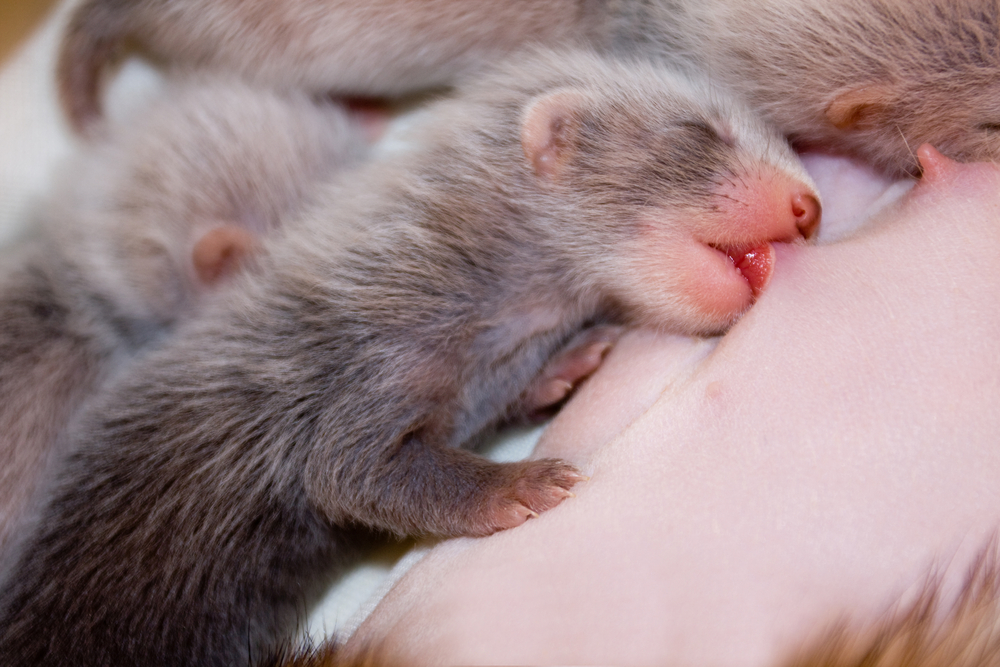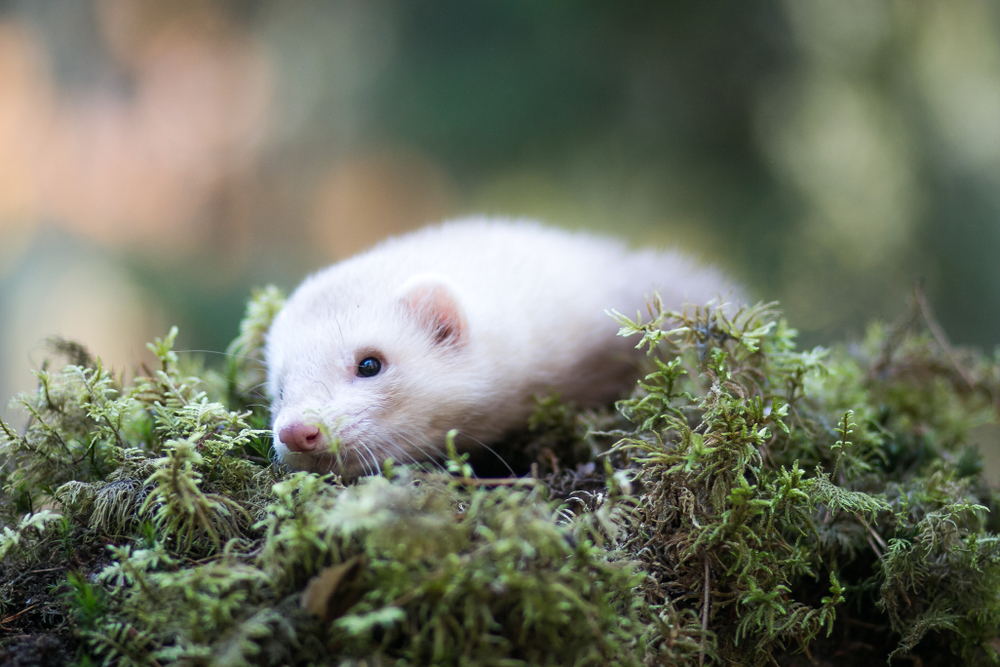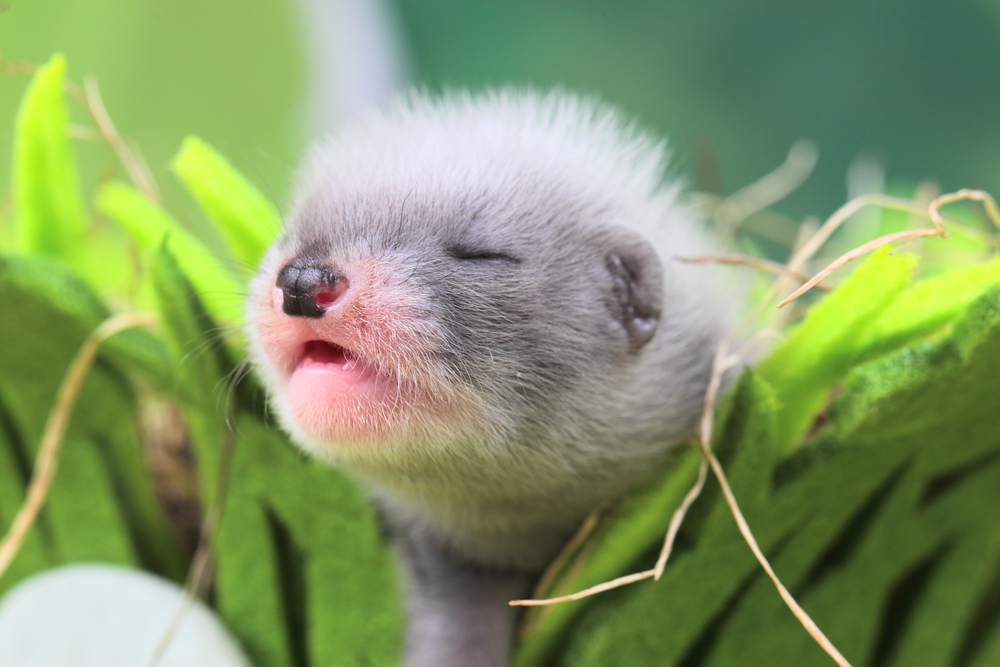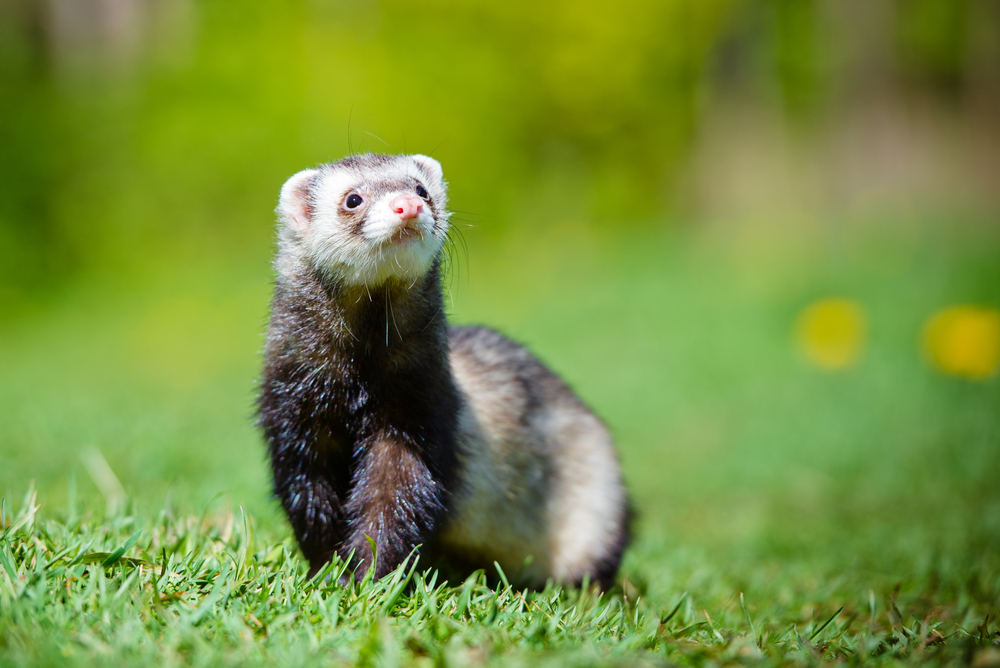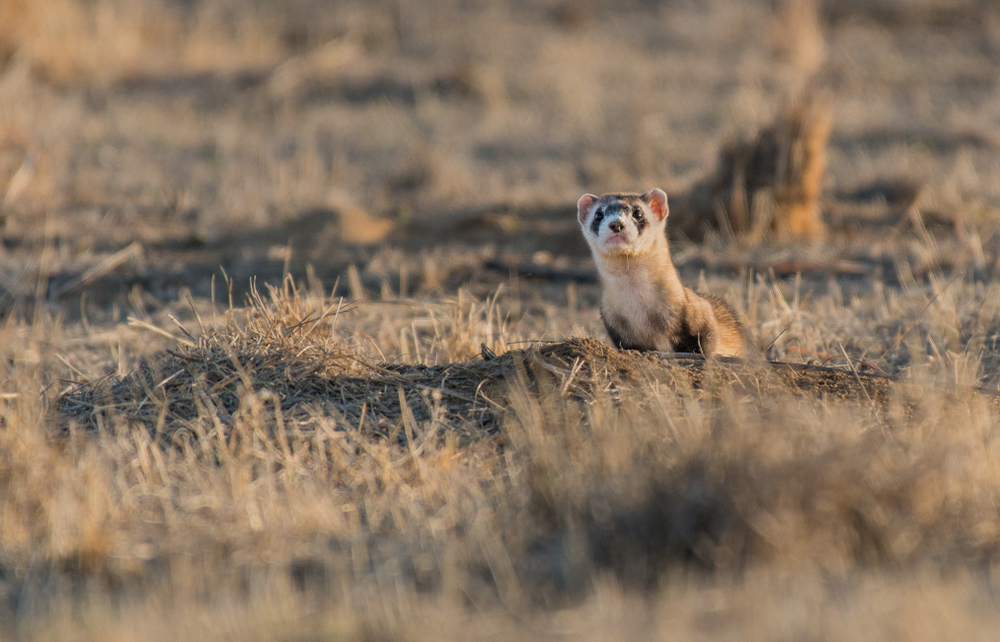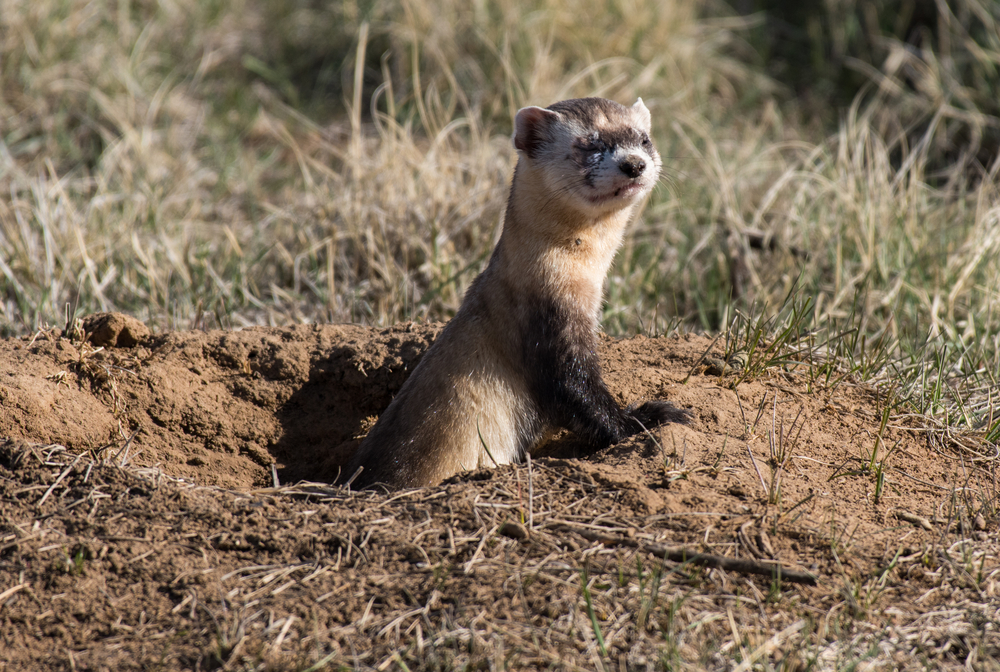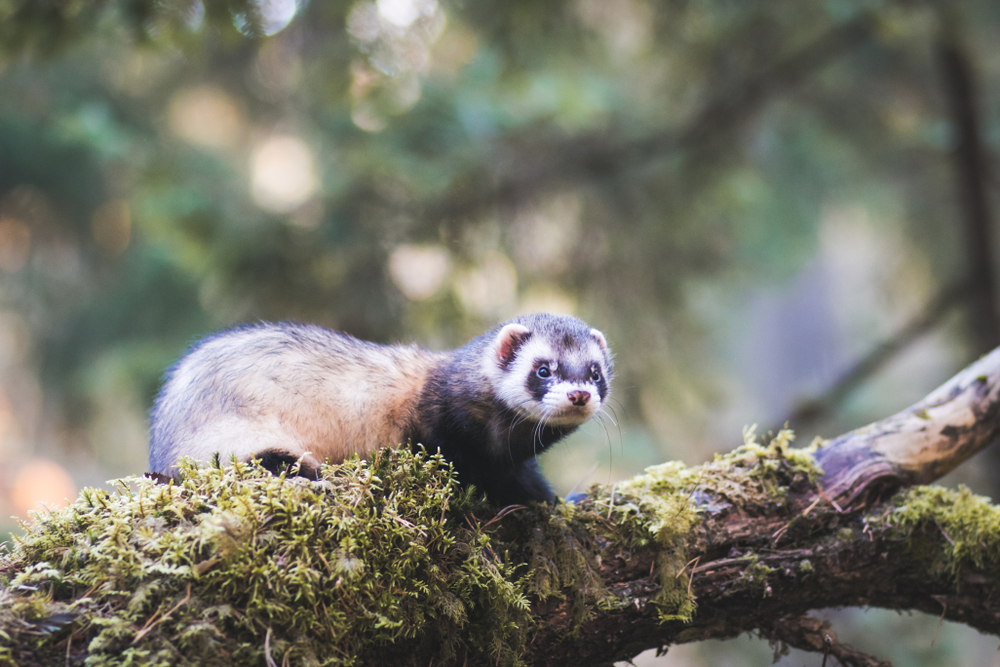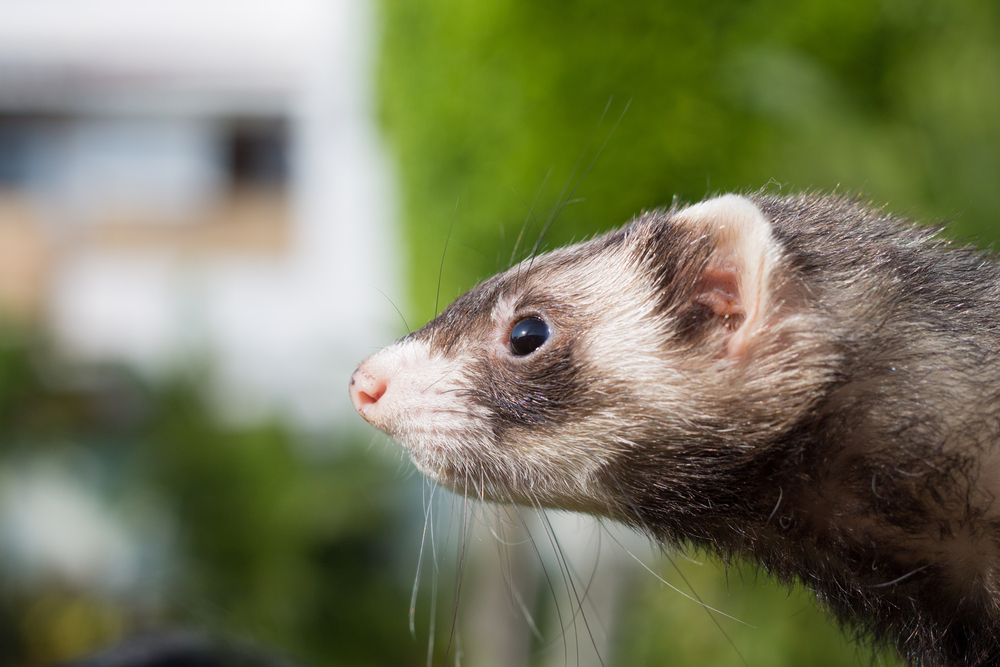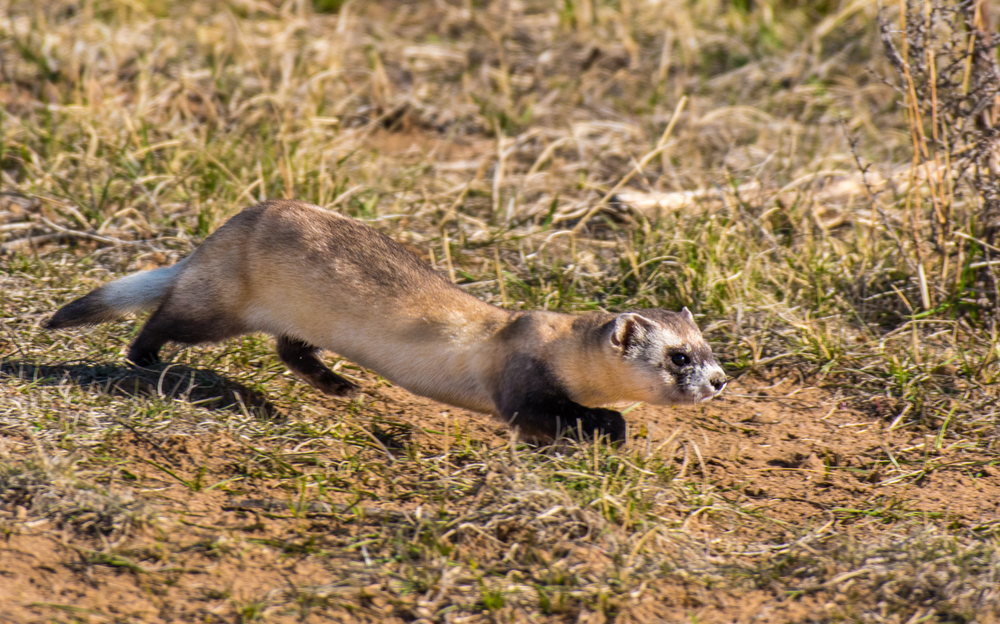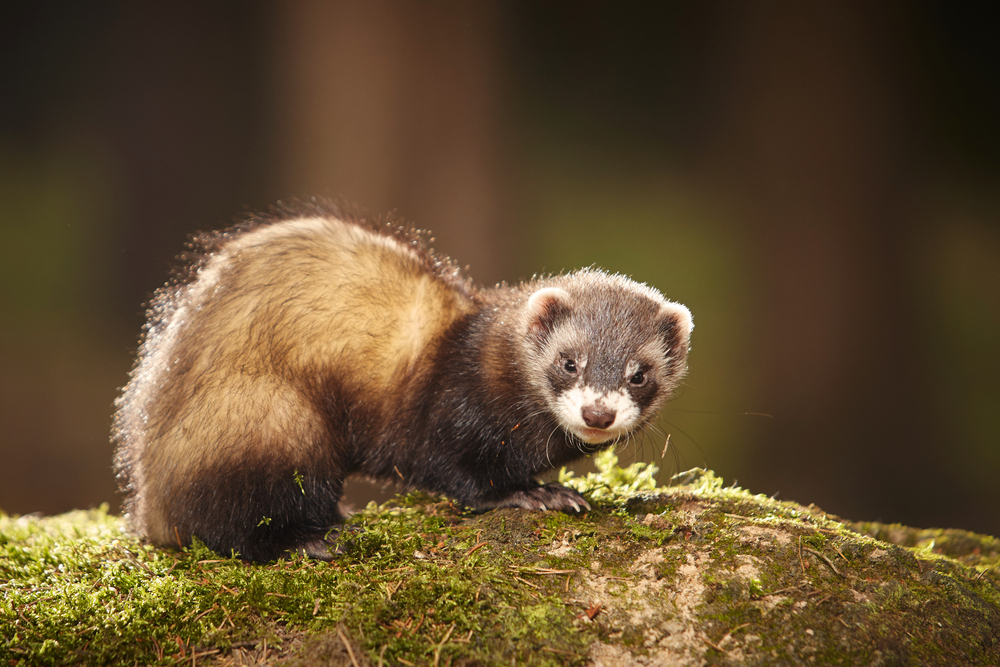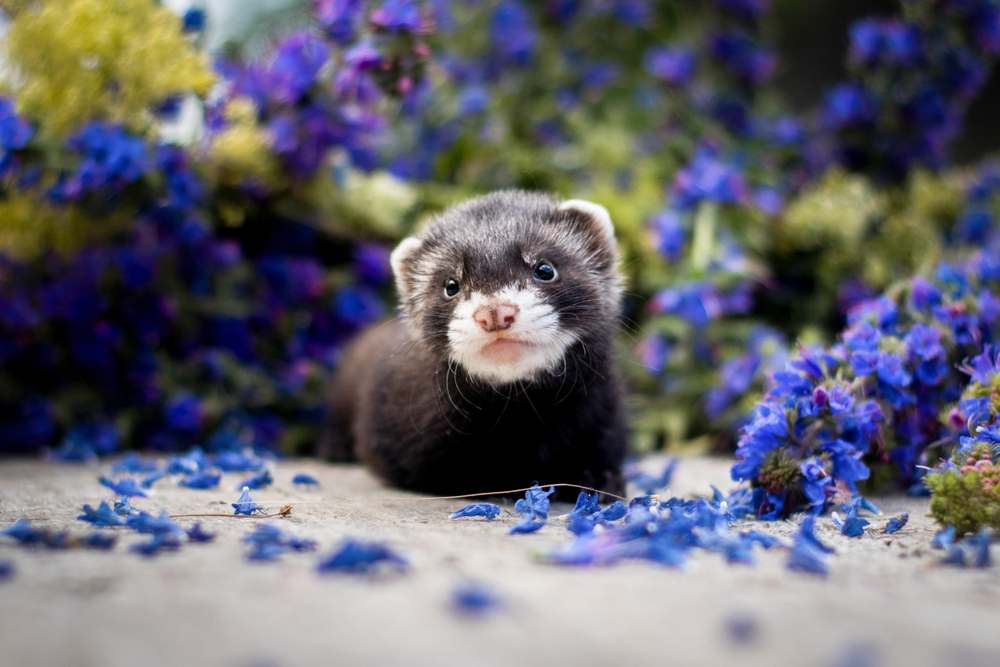About
The Ferret, scientifically known as Mustela putorius furo, is a domesticated mammal within the Animal Kingdom’s class Mammalia and order Carnivora. It belongs to the Mustelidae family, which also includes other carnivorous mammals such as weasels, otters, and badgers. Ferrets have been domesticated for thousands of years and are believed to have descended from the European polecat.
Ferrets have a slender, elongated body, with short legs and a long, tapered tail. They typically weigh between 0.7 to 2.0 kilograms and have a coat that can vary in coloration, including albino, sable, and silver. Domesticated ferrets have been selectively bred for various traits, including coat color, size, and temperament.
Ferrets are highly social animals and are often kept as pets due to their playful and affectionate nature. They are known for their curiosity and agility, which make them adept at exploring their environments. Ferrets are also skilled hunters and have been historically used for pest control, particularly to hunt rodents in barns and warehouses.
Conservation Concerns
While domesticated ferrets are widespread and not considered threatened, wild populations of European polecats, from which domestic ferrets are derived, may face conservation concerns. European polecats are native to Europe and parts of Asia, where they inhabit a variety of habitats, including forests, grasslands, and wetlands.
The European polecat’s status varies across its range, with some populations experiencing declines due to habitat loss, fragmentation, and persecution by humans. However, the European polecat is not currently assessed for conservation status on the International Union for Conservation of Nature (IUCN) Red List as a separate species.
Conservation efforts aimed at protecting the habitats of European polecats, reducing human-wildlife conflicts, and implementing measures to mitigate the impacts of habitat loss and fragmentation are essential for ensuring the long-term survival of wild polecat populations. Continued research and monitoring are necessary to assess population trends and implement effective conservation measures
Physical Characteristics
The Ferret (Mustela putorius furo) is a small, carnivorous mammal that belongs to the weasel family. It has been domesticated for thousands of years and is prized for its playful nature and hunting skills. Originally bred from the European polecat, ferrets are slender-bodied creatures with a high metabolic rate, making them very active and curious animals.
Size and Weight:
- Length: Ferrets typically measure about 20 to 24 inches (51 to 61 centimeters) from head to tail tip, with males being larger than females.
- Height: At the shoulder, they stand approximately 5 to 7 inches (13 to 18 centimeters) tall.
- Weight: Males weigh between 2 to 4 pounds (0.9 to 1.8 kilograms), while females are lighter, weighing around 1 to 2.5 pounds (0.5 to 1.1 kilograms).
Physical Characteristics:
- Fur: Ferrets have a thick, soft fur coat that comes in a variety of colors and patterns. The most common colors include sable, black, white, and albino, with patterns ranging from solid to mixed shades. Their fur provides insulation and helps regulate their body temperature.
- Body Shape: They possess a long, slender body with a flexible spine, allowing them to squeeze through narrow spaces. This agility makes them skilled hunters of small prey and adept at exploring their environment.
- Face: Ferrets have a distinctive mask-like coloration on their face, with bright, curious eyes and a keen sense of smell. Their facial glands produce a musky scent, which is used for marking territory and communication.
- Ears: Their ears are small and rounded, set high on the head, providing them with excellent hearing.
- Legs and Paws: Ferrets have short legs with long, slender paws equipped with sharp claws. These claws are non-retractable and aid in their digging behavior.
- Tail: The tail is bushy and accounts for about one-third of their body length. It aids in balance and communication through body language.
- Dentition: Ferrets have a set of 34 sharp teeth, including four long canine teeth. Their dental arrangement is well-suited for their carnivorous diet, allowing them to grasp and tear their food.
Ferrets are highly social animals, often engaging in playful and sometimes mischievous behavior. They require interaction and enrichment to stay mentally and physically healthy. As pets, ferrets provide a unique blend of affection and independence, making them a popular choice for animal enthusiasts. Their physical and behavioral characteristics reflect their adaptation to a life of hunting and exploration, even in a domesticated setting.
Reproduction
Ferrets have a distinctive reproductive cycle influenced by environmental factors and breeding behaviors. Here’s an overview:
Breeding Season: Ferrets are seasonal breeders, with the breeding season typically occurring in spring and early summer, from March to August. However, domestic ferrets may breed year-round in captivity due to controlled lighting and temperature conditions.
Courtship and Mating: During the breeding season, male ferrets, known as hobs, become more active and vocal in their attempts to court female ferrets, called jills. Courtship behaviors include chasing, play-fighting, and scent marking. Once a pair mates, fertilization occurs internally.
Gestation: The gestation period for ferrets lasts approximately 41 to 42 days, just over a month.
Nesting and Birth: Pregnant jills typically seek out a quiet, secluded area to build a nest for giving birth. They may shred bedding materials and create a cozy nesting site in preparation for the arrival of their kits. Ferrets give birth to litters of typically 3 to 8 kits, although litter size can vary.
Maternal Care: After birth, the mother ferret provides extensive maternal care to her newborn kits, nursing them and keeping them warm in the nest. She cleans and grooms the kits to stimulate their growth and development.
Development and Weaning: Ferret kits are born blind, deaf, and hairless, completely dependent on their mother for nourishment and care. They begin to open their eyes at around 3 to 4 weeks old and start exploring their surroundings. Kits are weaned gradually over several weeks as they transition to solid food.
Socialization and Play: As the kits grow, they engage in playful behaviors with their littermates, helping to develop social skills and coordination. Play is an essential part of their early development and contributes to their overall well-being.
Sexual Maturity: Ferrets reach sexual maturity at around 6 to 8 months of age, although this can vary depending on factors such as genetics and nutrition.
Environmental Factors: The reproductive cycle of ferrets is influenced by factors such as daylight length, temperature, and social interactions. Domestic ferrets bred for specific traits may have altered reproductive patterns compared to their wild counterparts.
Conservation Concerns: While domestic ferrets are popular pets, their wild counterparts face threats such as habitat loss, disease, and predation. Conservation efforts focus on protecting their natural habitat and managing populations to ensure their long-term survival.
Lifespan
Ferrets, domesticated relatives of the European polecat, are popular pets known for their playful and curious nature. Here’s an overview of their lifespan and threats to their life:
Lifespan in Captivity: In captivity, under proper care and conditions, ferrets can live relatively long lives compared to their wild counterparts. On average, pet ferrets live between 6 to 10 years, although some individuals may reach 12 years or more with excellent care.
Wild Lifespan: In the wild, ferrets have a shorter lifespan due to various factors, including predation, disease, and environmental hazards. Wild ferrets typically live for around 2 to 3 years, although this can vary depending on habitat quality and other factors.
Threats to Ferrets:
- Disease: Ferrets are susceptible to several diseases, including canine distemper and influenza, which can be fatal if left untreated. Vaccination against these diseases is essential for pet ferrets.
- Accidents: In both wild and captive environments, ferrets are at risk of accidents such as falls, getting trapped, or ingesting foreign objects, which can lead to injury or death.
- Predation: In the wild, ferrets face predation from larger carnivores such as foxes, birds of prey, and domestic cats and dogs.
- Habitat Loss: Habitat loss and fragmentation due to human development, deforestation, and agricultural expansion threaten wild ferret populations. Loss of suitable habitat reduces their access to prey, shelter, and breeding sites.
- Climate Change: Climate change-related impacts, such as extreme weather events and shifts in habitat suitability, can affect the distribution and abundance of prey species for wild ferrets, impacting their survival and reproduction.
- Illegal Trade: Despite legal restrictions on the trade of wild ferrets in many regions, illegal trapping and trading of these animals still occur, leading to population declines and disruption of ecosystems.
Conservation efforts for wild ferrets focus on habitat conservation, population monitoring, disease management, and public education to raise awareness about the importance of protecting these animals and their habitats. In captivity, responsible pet ownership, regular veterinary care, and appropriate housing and enrichment are essential for ensuring the health and well-being of pet ferrets.
Eating Habits
Ferrets are carnivorous mammals belonging to the Mustelidae family, closely related to weasels and otters. Understanding their eating habits sheds light on their dietary needs and foraging behaviors in the wild and captivity.
Diet: Ferrets are obligate carnivores, meaning they primarily consume meat for their nutritional requirements. Their diet typically consists of:
- Meat: Meat forms the foundation of a ferret’s diet. In the wild, ferrets prey on small mammals such as rodents, rabbits, and birds. In captivity, they are commonly fed commercially available ferret food made from high-protein sources such as chicken, turkey, or lamb. Raw or cooked meat is also suitable for their diet, providing essential nutrients like protein and fat.
- Animal Products: Apart from meat, ferrets may consume other animal products such as eggs and organs. These provide additional nutrients like vitamins and minerals necessary for their overall health and well-being.
Foraging Behavior: In the wild, ferrets exhibit efficient hunting and foraging behaviors to acquire their prey:
- Stalking and Pouncing: Ferrets are agile hunters known for their ability to stalk and pounce on small mammals. They use their keen sense of smell and excellent vision to locate prey and employ stealthy movements to approach and capture it.
- Burrowing: Ferrets are skilled burrowers and often inhabit burrows previously dug by other animals. They may also dig their own burrows to shelter, rest, and raise their young. This behavior aids in accessing underground prey and provides protection from predators.
- Scavenging: Ferrets are opportunistic feeders and may scavenge on carrion and food scraps left behind by other animals. Scavenging helps supplement their diet, especially during times when prey availability is low.
Feeding Frequency: Ferrets have fast metabolisms and require frequent meals to meet their energy needs. In captivity, they typically eat 6-8 small meals throughout the day to mimic their natural feeding patterns. Access to fresh water should also be provided at all times to prevent dehydration.
Special Considerations:
- While ferrets are primarily carnivorous, they may occasionally consume plant matter such as fruits or vegetables. However, these should be offered in small quantities as treats and not as primary food sources, as they lack the digestive enzymes necessary to process plant material efficiently.
- Commercially available ferret food formulated specifically for their nutritional needs is recommended for captive ferrets to ensure they receive adequate protein, fat, vitamins, and minerals.
- Ferrets are prone to obesity and dental issues if fed an inappropriate diet high in carbohydrates or sugars. Therefore, it’s essential to provide a balanced diet tailored to their carnivorous nature to maintain optimal health and longevity.
Uniqueness
The Ferret, scientifically known as Mustela putorius furo, is a small, carnivorous mammal that belongs to the weasel family. Originally bred from the European polecat, ferrets are unique in several ways, both as wild animals and as domestic pets. Here are some key aspects that make the Ferret unique:
Domestication and History: Ferrets have been domesticated for over 2,000 years. They were primarily used for hunting rabbits and rodents, a practice known as ferreting, where they would chase rodents out of their burrows and into nets. This historical use highlights their keen hunting instincts and adaptability.
Playful and Social Behavior: Ferrets are highly social and playful animals, known for their curious and mischievous nature. They enjoy interacting with humans and other ferrets, making them popular pets. Their playful behaviors, including hopping sideways, known as the “weasel war dance,” are not only entertaining but also indicative of their natural hunting behavior.
Physical Adaptations: Ferrets have a long, slender body, making them well-suited for navigating through tight spaces—a crucial trait for an animal used historically for burrowing into small passages to chase out prey. They also have sharp, pointed teeth and a strong jaw grip ideal for their carnivorous diet.
Scent Communication: Like other mustelids, ferrets have prominent scent glands near their tails, which they use for communication and territorial marking. While domestic ferrets usually have these glands removed to minimize odors, scent communication is a significant aspect of their behavior in the wild.
Reproductive Characteristics: Ferrets have unique reproductive needs. Female ferrets (jills) can remain in heat for extended periods if they do not mate, which can lead to health issues like aplastic anemia. This necessitates either breeding or medical intervention, such as hormone injections or spaying.
Dietary Needs: As obligate carnivores, ferrets require a diet high in protein and fat. They have a short digestive system that rapidly processes meat, but this means they need frequent small meals of high-quality, meat-based foods, which mimics their natural hunting patterns of frequent, small prey.
Sensory Capabilities: Ferrets have excellent hearing and a keen sense of smell, which are vital for hunting and navigation. Although their vision is not as sharp, especially over long distances, it is well-adapted to low light conditions, reflecting their crepuscular nature.
Conservation and Legal Status: While domestic ferrets are common pets, they are regulated in some places due to concerns about them becoming invasive species if released into the wild. In New Zealand, for example, ferrets have been banned as pets to protect native wildlife.
Health and Research: Ferrets have been instrumental in scientific research due to their susceptibility to human viruses, including influenza and COVID-19. They are valuable in studies of respiratory diseases, helping researchers understand the spread and treatment of these conditions.
The Ferret’s combination of playful behavior, physical agility, social interaction, and utility both historically and in modern scientific research makes it a unique and fascinating member of the animal kingdom. Whether as beloved pets or tools in ecological management and medical research, ferrets continue to contribute significantly to human understanding of the natural world.
Sources
- Britannica, Ferret, https://www.britannica.com/animal/ferret, retrieved January 2024.
- Burnie, David & Wilson, Don, Animal, Smithsonian Institute, Washington DC.
- Clutton-Brock, Juliet and Wilson, Don, Mammals, Smithsonian Handbooks, New York, NY.
- Hickman et al, Integrated Principle of Zoology, McGraw Hill, Boston.
- Paragon, The Ultimate Guide to Wildlife in NorthAmerica, Atlantic Publishing, UK.




































































